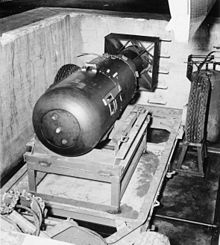It isn’t often that I find myself literally stopping in my tracks. However, a short and powerful animation has done just that. Originally intended for broadcast on Children’s BBC in the UK, I have no hesitation is saying I found it thought provoking, dramatic and very moving. It was on Saturday of the recent weekend when I accidentally flicked to a channel showing the material. Although it was part way through I was so engaged with it that I watched to the end and then found it online to watch from the start.

The last week marked seventy years since the detonation of an atomic bomb over Hiroshima. The innocently named ‘little boy’ was released at around 32.000 feet from the Enola Gay at 08.15 local time. After falling for just over 40 seconds it’s detonation arguably led to the shortening of World War II and undoubtedly shaping the military geopolitics of the next 50 years.
In the second following detonation 70,000 people were killed by the force of the detonation simply vaporised by the explosive power of the device. Over the next days and weeks a further 100,000 died from the fallout and radiation poisoning.
The ‘little boy’ had an explosive payload of 15 kilotones, that being the equivalent of 15,000 tons of TNT. At the time, this destructive power was simply beyond the comprehension of many hearing of the explosion.
In fact, the second detonation at Nagasaki was larger. The ‘big man’ device was closer to 20 kilotones and given the geography and make up of Nagasaki was considerably more destructive. Knowing this, how can you make an animation detailing the events of that day? Simply put, by humanising the story, putting the viewpoint of a young girl who found herself on the outskirts of Hiroshima on that fateful morning.
The skill of the animators in sympathetically presenting those events was based on the real life experiences of a now well known Japanese poet. However this powerful example of the impact of such weapons has done little within Japan to silence the growing voices for the re-introduction of Japan’s capacity to wield such weapons as a nation.

Following its defeat at the end of world war II, Japan introduced a greatly revised pacifist constitution. This prevented aggressive armed forces (although it allowed the country to retain a greatly reduced self protection force).
Last year, Prime Ministe Abe reinterpreted aspects of the constitution to broaden the definition of self defence. As a result, Japan could and has now publically stated would come to the support of American forces if attacked by growing Chinese power in the region.
Similarly, weaponry seen as unconstitutional just ten years ago is now permitted. These include long range anti aircraft and anti missile defensive weapons.
This move had the unforeseen result of bringing traditionalist and nationalist Japanese voices joining in a call for the ultimate self-defence capability , nuclear weapons.
Whilst current anti-proliferation laws and the political balance of the country is unlikely to see Japan develop these, it might see further deployment of strategic weaponry from allies such as the United States.

The fact that a nation has a right to defend itself and its people is not in dispute. However, the irony of Japanese protester demanding nuclear weapons outside the shell of the most famous surviving building in Hiroshima seems lost on those taking part.
A fact which may give pause for thought for those calling for this type of rearmament relates to the growth in power of weapons since 1945.
The ‘little boy’ explosion flattened an area of some ten square miles. Even allowing for the construction methods of Japanese housing at the time this was devastating force which virtually nothing hit by the blast wall was able to withstand.
The ‘standard’ yield on most atomic weapons is no longer the 15 kilotons of the little boy. Most carry an explosive force of 15,000 kilotons. I wonder if those in all countries who call for the ultimate protection of nuclear weapons could look at Hiroshima and imagine something one thousand times as destructive.
I for one hope that in the week in which the events of 70 years ago are remembered, we might all consider the futility of weapons that are now so powerful they could not be used tactically and would ensure joint annihilation. We may not be able to unlearn the knowledge coming out of the Manhatten project, but we can all play a part in preventing further reliance and proliferation.

You must be logged in to post a comment.